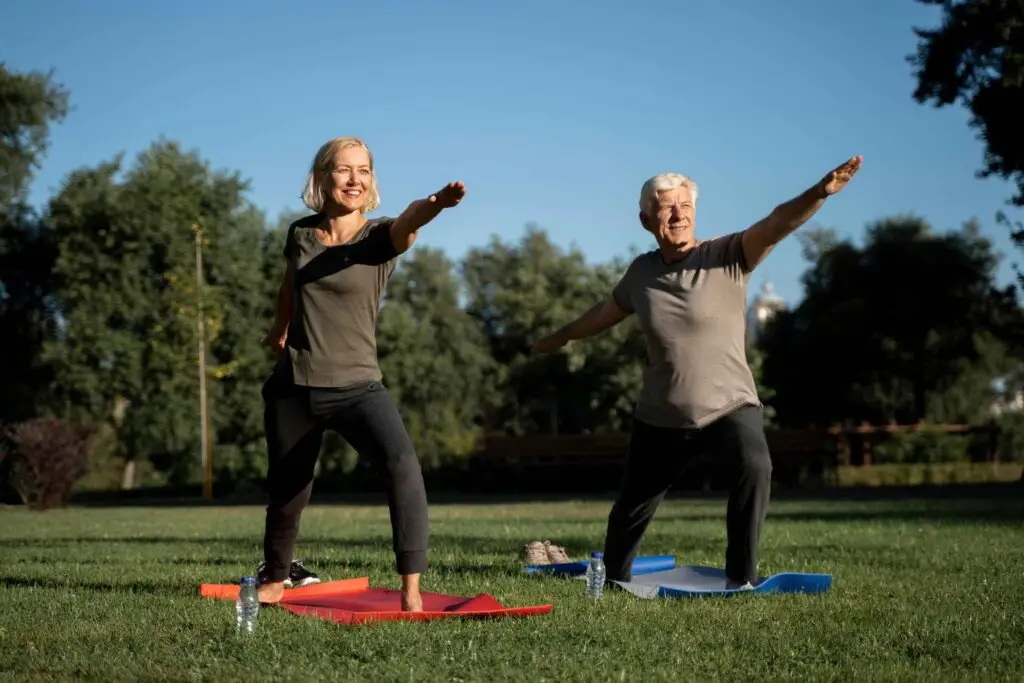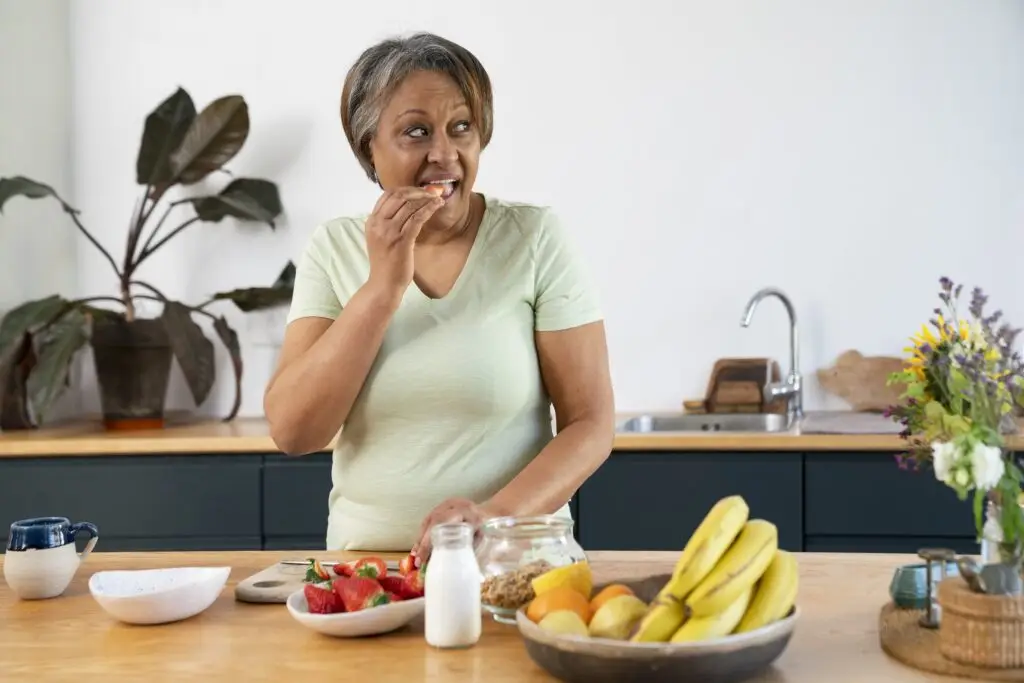Meal prepping isn’t just for busy professionals or fitness enthusiasts—it’s an incredibly useful tool for seniors, too. Whether you’re cooking for one, two, or a small group, planning and preparing meals ahead of time can save you money, reduce daily stress, and make eating healthy much easier.
By cooking in batches, you’ll always have nutritious, ready-to-eat meals without the hassle of starting from scratch every day. In this guide, we’ll explore practical, senior-friendly meal prep tips along with easy batch recipes you can enjoy throughout the week.
Why Meal Prep Works Well for Seniors
Many seniors face similar challenges in the kitchen—limited energy for cooking, difficulty with grocery shopping, or simply not wanting to prepare an entire meal every day. Meal prepping addresses these issues by:
- Reducing daily cooking time — just heat and eat.
- Saving money by buying in bulk and avoiding takeout.
- Encouraging healthy eating with balanced meals ready to go.
- Minimizing kitchen mess — fewer dishes and cleanup sessions.
Step 1: Plan Before You Cook
Successful meal prep starts with a plan.
Tips for planning senior-friendly meals:
- Choose recipes with simple steps and minimal chopping.
- Opt for versatile ingredients—chicken, beans, rice, leafy greens—that can be used in multiple dishes.
- Include a mix of proteins, whole grains, and colorful vegetables.
- Keep dietary needs in mind (low sodium, diabetic-friendly, soft textures, etc.).
Step 2: Choose Your Batch Cooking Style
There’s no single “right” way to meal prep. Seniors often benefit from one of these three approaches:
1. Cook and Portion — Make a large batch of a single recipe, then portion it into containers for the week.
2. Ingredient Prep — Wash, chop, and store ingredients separately so you can quickly assemble meals.
3. Mix and Match — Prepare a few proteins, grains, and vegetables separately, then combine them differently each day to keep meals varied.
Step 3: Invest in the Right Containers
Good storage makes all the difference.
Container tips:
- Use lightweight containers with secure lids (easier to open than glass jars for those with arthritis).
- Label with the meal name and date.
- Use freezer-safe containers for longer storage.
Easy Batch Meal Ideas for Seniors
Below are simple, senior-friendly ideas you can prep in under an hour and enjoy all week.
1. Slow Cooker Chicken Stew
Why it works: Minimal prep, cooks while you relax, and reheats beautifully.
Ingredients:
- 2 lbs boneless chicken thighs
- 3 cups chopped carrots and celery
- 2 potatoes, cubed
- 1 onion, diced
- 4 cups low-sodium chicken broth
- Herbs: thyme, parsley, bay leaf
Instructions:
Place all ingredients in a slow cooker and cook on low for 6–8 hours. Portion into containers and refrigerate or freeze.
2. Overnight Oats
Why it works: No cooking required and easy to customize.
Base Recipe:
- ½ cup rolled oats
- ½ cup milk or non-dairy milk
- ¼ cup fruit (berries, banana slices, diced apple)
- 1 tsp chia seeds or flaxseed
Combine in a jar, refrigerate overnight, and enjoy cold or warmed up. Make several jars at once for grab-and-go breakfasts.
3. Baked Egg Muffins
Why it works: High in protein, freezer-friendly, and easy to reheat.
Base Recipe:
- 8 eggs
- ½ cup chopped vegetables (spinach, mushrooms, bell peppers)
- ½ cup shredded cheese
- Salt and pepper to taste
Whisk eggs, stir in veggies and cheese, pour into greased muffin tins, and bake at 350°F (175°C) for 20 minutes.
4. Sheet Pan Salmon and Vegetables
Why it works: One-pan cleanup, healthy fats, and colorful nutrition.
Ingredients:
- 4 salmon fillets
- 3 cups mixed vegetables (zucchini, broccoli, carrots)
- 2 tbsp olive oil
- Lemon slices, herbs, salt, pepper
Arrange salmon and veggies on a sheet pan, season, and bake at 400°F (200°C) for 15–20 minutes.
5. Brown Rice and Quinoa Mix
Why it works: Great as a side dish or base for grain bowls.
Instructions:
Cook a large batch of brown rice and quinoa together. Store in portioned containers to use with different proteins and vegetables throughout the week.
Step 4: Store and Label Properly
Fridge Storage: Most cooked meals last 3–4 days.
Freezer Storage: Soups, stews, and baked items can last up to 3 months.
Always cool food before storing to prevent condensation and bacterial growth.
Step 5: Reheat with Care
Reheating correctly preserves flavor and texture:
- Microwave: Stir halfway through heating to ensure even warmth.
- Stovetop: Add a splash of water or broth to prevent drying out.
- Oven: Reheat at 300°F (150°C) for gentle warming.
Extra Tips for Seniors New to Meal Prep
- Start small — Prep just two recipes a week until you find your rhythm.
- Involve a friend or family member — Meal prep together and share portions.
- Rotate recipes — Avoid food boredom by swapping out one recipe each week.
- Keep a list — Write down which meals freeze well and which don’t.
Quick & Easy Snack Prep
Don’t forget snacks—prepping them keeps you from grabbing less healthy options.
- Pre-portion nuts into small bags.
- Slice vegetables and store with a damp paper towel to keep them crisp.
- Make a batch of yogurt parfaits with fruit and granola.
Final Thought
Meal prepping for seniors doesn’t have to be complicated or exhausting. With a little planning, the right containers, and easy batch recipes, you can enjoy fresh, healthy meals without cooking every day. Whether you’re storing slow-cooked stews, ready-to-eat breakfasts, or colorful sheet pan dinners, the key is finding a system that works for your lifestyle. Once you start, you’ll wonder how you ever managed without it—because meal prep is more than just cooking ahead; it’s a recipe for saving time, money, and energy while eating well.
FREE DOWNLOAD (PDF): How to Meal Prep for Seniors





